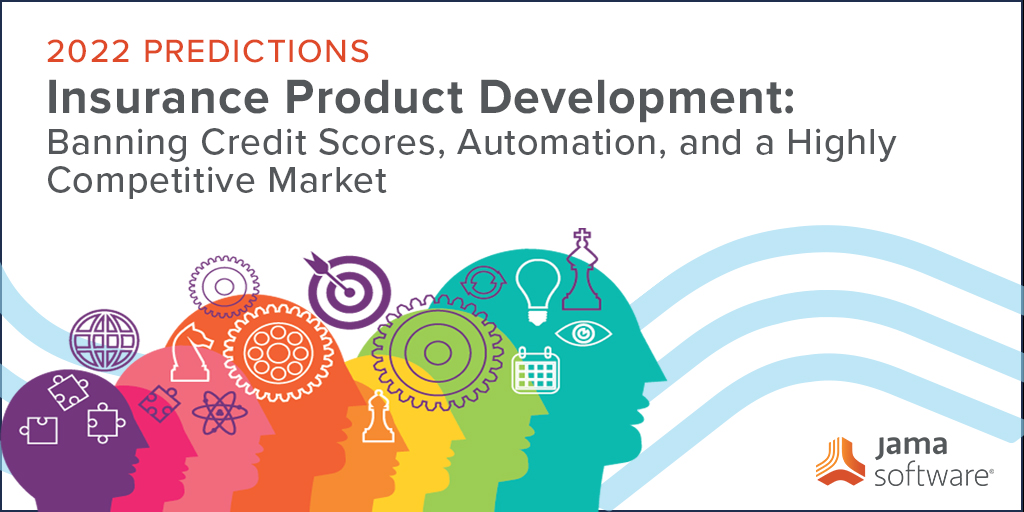
Leveraging Automation and Technology to Solve Key Challenges in Insurance Product Development
Several current P&C insurance trends are fueling demand for new and updated insurance products, especially because of advances in digitization. Insurance innovation, competition, new market entrants, and changing consumer preferences are some additional drivers behind new insurance product demand. Everything from customer personalization to new and different data sources is inspiring development or modification to existing insurance products – all at a faster pace.
Usage-based auto insurance and behavioral-based rewards are examples of newer capabilities, possible due to digitization, in turn, increasing consumer value and adoption, Embedded insurance, although not an entirely new concept, is trending because of digital ease and convenient availability by placing an insurance offering right at the point of purchase. Travel insurance with digital airline bookings, pet insurance with a banking app, auto insurance bundled in with auto financing, and similarly commercial insurance plus commercial vehicle purchase. Digital ease and access are making it easier to combine these offerings. Things become even more interesting when a car manufacturer and insurer share telematics data and offer a bundled safe driving program to unlock discounts. This is already happening as evidenced by companies like Tesla, Ford, GM, and others.
Embedded insurance fits a number of scenarios geared toward making commerce more streamlined and perhaps more logical as one combined experience and is forecast to drive significant new revenue as well. The concept also bodes well for capturing and maintaining consumers’ attention very much in the moment. Just consider having to search and price various travel insurance options separately and after spending time finding and booking travel where it can be too easy to forego insurance coverage once the presence of mind has escaped. Rental car companies have excelled in promoting additional insurance and taking the extra steps of having drivers decline coverage as part of the contract – right at the counter or online purchase.
Related Reading: Simplify Complex Insurance Product Development with Jama Connect®
What the Insurance Product Experts Say
We recently spoke with several insurance product and regulatory compliance executives and gathered their insights about the state of product development. Insurance product development is often described as slow and expensive, adding to carriers’ existing challenges to automate and reduce expense ratios. Thus, each new product competes for other internal resources and budgets. Development cycles can take several months or even longer from start to launch. When probing a bit more, insurance product owners cite IT backlogs, cost barriers, and slowness around decision making and approvals as some of the common causes. A key component of product development involves approvals through traditional hierarchies which flow from analyst groups to management and from middle managers to executives. Either way, the process is described as a gathering of specialists and individual organizations collaborating together over a long period of time. These steps tend to occur in meetings and through emails which can elongate timelines and be difficult to organize and later trace.
The experts say that such barriers result in a measured volume and cadence of new product launches in any given year. In fact, some product modifications may be abandoned entirely as the backlog for IT projects is recognized insurmountable. One such insurance executive described the completion of a new product as highly dependent upon select, internal subject matter experts with deep institutional knowledge. And, it frequently takes “sheer leadership heroics” to push the process to the finish line. Admittedly, insurance product development is complex, especially when it comes to meeting various state rules and regulations.
People, Process & Technology
Equipping teams with the right tools is one of the three essential, People, Process & Technology legs needed to enable effective business management. This framework has been widely accepted for decades and is even more relevant today. Building the correct set of requirements is the cornerstone of modern product development and this is where insurance carriers’ people teams strive to share, inform and collaborate whether in a waterfall, agile, or a hybrid project environment. Nearly every core functional area has a role to play; from legal research to marketing, from actuary and pricing to distribution. Insurance carrier functional areas are specialized and distinct, so the term, “siloed” is fitting as both a strength and barrier when it comes to coordinating people’s expertise for requirements creation. Invariably, much of the process is manual, unfolding through a series of meetings, email inquiries, and approvals and perhaps tracked on spreadsheets and shared drives, thus can be error-prone, lack updates, and most certainly difficult to trace.
Tools and adoption of technology for requirements management are lagging, both in terms of today’s speed-to-market pace and when comparing other complex industries. Yet insurance carriers are continuously investing to catch up. Sophisticated policy admin platforms are needed to maintain all aspects of policy management and many carriers have embarked or may have recently completed legacy system transformational efforts, and for good reasons. Here are just a few:
- New products may depend on third-party data ingestion and accessibility needs to be cost-effective and has been a barrier since legacy systems don’t have efficient connection points to these outside sources.
- When a new underwriting data source is presented, the cost-benefit analysis doesn’t support investment costs inherent in legacy systems.
- Legacy systems have also created difficulty in understanding and addressing defects that have a direct impact to expense due to the time needed to trace, investigate and apply a fix, not to mention business, regulatory, and brand reputation risks.
Insurance carriers are certainly investing and working with a growing number of applications and are constantly managing long IT project list backlogs. So, playing catch-up is an accurate description when it comes to deploying new tools.
Related Reading: The Emergence of Technology for Insurance Product Development
Team Collaboration is a Must
During our research discussions with insurance product development experts, we heard a lot about the level of reliance on key people and teamwork. Some of the common themes expressed by leaders revealed:
- In lieu of solid processes and technology, much work is manual, and success is delivered due to sheer, individual “heroics”.
- Senior leadership tends to reward these heroics so there may be limited motivation to change. Long development cycles are somewhat accepted.
- Solid change management is a major dependency to ensure people are embracing new technologies – systems are only as good as the people that use them so advocacy at a senior level is imperative
- Challenges exist due to the many moving parts and functional areas involved in product development – it’s complicated!
- Transparency/Traceability of changes. What is the change and associated impacts, who is making the change, why is the change being made, how is the change being tested and implemented are key questions.
- There are competing priorities within functional areas that can impede collaboration.
Technology
As technology catches up to make product development more efficient, collaboration and teamwork remain vital mainstays. Organizations are beginning to activate return-to-office plans which involve several flexible hybrid options so new forms of teamwork and collaboration should be in the forefront now more than ever.
The industry has also tackled legacy system transformations noting that few are completed, many are deploying and some have avoided the undertaking altogether because of massive costs and time factors. While there are constant new technology horizons yet to achieve, such as cloud migration, deployment of tools, and user capability upgrades are deserving areas of attention when it comes to striking the right mix of People, Process & Technology. Product development platforms are likely to be one of those priorities for insurers seeking to keep pace with product development and the latest technology.



